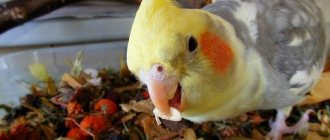Gastronomic warnings
Hedgehogs are predators, they enjoy feasting on:
- Worms;
- Snails;
- Frogs;
- Small mice;
- Insects.
Plant foods may also be to their taste, but they still prefer meat to fruits and mushrooms. And they won’t carry food on needles - it’s too hard. Although hedgehogs can sometimes prick garbage in order to scare off various parasites that bother them with the smell. They lead a nocturnal lifestyle, so they show up at dachas when everyone is already asleep. The animals stomp around happily and quickly eat food intended for cats and dogs.
The desire of people to feed the forest guest is completely justified. However, it is important to remember two points. Firstly, hedgehogs are quite unrestrained in food, and therefore are ready to eat everything that is offered to them. True, the consequences of such a gastronomic addiction may not be the best.
Secondly, it is advisable to immediately find out why hedgehogs cannot have milk. Adults lack the enzymes that are responsible for the breakdown of lactose, which is part of dairy products. Hedgehogs will happily drink the milk offered, but soon they will show signs of poisoning - upset stomach, indigestion, diarrhea. There is also a risk of death.
Many people mistakenly believe that if an animal drinks milk, then he likes it and it is good for him. We can agree with the first part of the statement - hedgehogs love to eat milk. But there will be no benefit from such food. Most likely, after some time, symptoms of poisoning will appear - and this is a very serious reason why hedgehogs should not have milk.
Be careful with your little guest
Hedgehogs look very cute, but you should not come into such close contact with the animals. After all, they are carriers of the most dangerous diseases - rabies, salmonellosis, fever. For example, rabies is transmitted through saliva from the bite of a frightened animal. Since animals sometimes prick small debris onto their needles, it creates an excellent environment for the proliferation of pathogenic bacteria.
Various parasites often live on hedgehogs - ticks, fleas. There is a risk of contracting stomatitis. Therefore, it is better to observe the animal from a distance, feeding it, but not letting it into the house. If you want to tame a hedgehog, you will have to take care of regular vaccinations.
Products hazardous to health
The heavy substances that make up many dairy products are poorly absorbed in the rodent's body. He becomes inactive, lethargic, sleepy. The gastrointestinal tract, liver, heart and blood vessels suffer.
It is better not to give the animal:
- Sour cream. This product has a high fat content and is poorly absorbed by the body.
- Kefir. Strikes the liver of a rodent. Poor quality food can cause constipation, and stale food can cause diarrhea.
- Yogurt. The high content of fats and flavoring additives is dangerous for the health of the hamster.
- Butter. It has a high fat content and is poorly absorbed by the body.
- Milk porridge. Large amounts of milk and cooked cereals harm the baby’s liver.
What to feed these animals
Since these pets are predators, they can be given minced meat. This product can be either raw or cooked. Also, prickly pets will not refuse eggs, boiled chicken and fresh fish. You can offer your animal fruits or vegetables. Ideally, a hedgehog's diet should be as bland as possible. Fatty foods, sweets, sour and salty foods should not be given to them. Also, in addition to food, fresh water should always be present in the diet of these animals. Refusal to drink indicates that the hedgehog should be shown to a specialist.
Don't feed hedgehogs milk
All summer residents are familiar with the thorny forest inhabitants. Hedgehogs shamelessly come to dinner, and we invite them to visit with tears of tenderness. On social networks, photographs of hedgehogs have already eclipsed seals. In cartoons there are hedgehogs, songs about hedgehogs. But in fact, hedgehogs are not that cute, and it’s better to communicate with them from a distance.
Senya, the son of a KP correspondent, saw a hedgehog on a path in the forest, caught up with the animal and strung all the collected strawberries onto its needles, because in cartoons hedgehogs always carry apples and mushrooms on their thorns. And children are not afraid of hedgehogs at all, they try to catch up, grab, turn over and scratch their belly. And then they pour milk into a saucer and wait for the hedgehogs to come for a treat. Senya strung all his strawberries onto needles for the hedgehog, because that’s exactly how hedgehogs walk in cartoons Photo: Oksana Kalnina
Senya strung all his strawberries onto needles for the hedgehog, because that’s exactly how hedgehogs walk in cartoons
Is it possible to feed hedgehogs milk?
These babies do not have the enzyme in their body that breaks down lactose. If you offer a hedgehog cow's milk, he will, of course, drink it, but will soon begin to suffer from indigestion. Sometimes hedgehogs experience food poisoning and diarrhea.
Moreover, cow's milk contains antibodies that can simply destroy the body of a small animal. So says Moscow Zoo zoologist Alexey Turovsky. However, the specialist notes that this does not apply to goat or dog milk.
The zoologist explains the killing effect of cow's milk on hedgehogs by the fact that in natural habitats such food is completely excluded for them. “In order not to make the animal worse, you should not feed it at all,” Turovsky says about hedgehogs. The zoologist claims that any wild animal, if it is healthy, is able to feed itself.
“The generally accepted opinion that hedgehogs are hungry and want to eat is a misconception,” notes the zoologist. In summer, hedgehogs really have no problems with food. However, in early spring, these animals still need food.
In this case, hedgehogs can be fed with available food: cat or dog food, raw eggs, boiled sausage, tomatoes, lettuce, apples, carrots, pears. If possible, the hedgehog should be given fresh, cool water in a bowl after feeding.
Probably, each of us at least once in our lives, either in the village, or on TV, saw a cute, fluffy, prickly baby hedgehog drinking milk from a saucer. This composition cannot help but touch you.
However, if you decide to give your children joy and have such a cute pet at home, then you should know everything about the diet of these animals, including, for example, whether hedgehogs can drink milk.
Scientific information about hedgehogs breaks all stereotypes about these animals. So, from an early age we drew hedgehogs with an apple, pear or mushroom on their needle-like back. Therefore, it is surprising to learn that hedgehogs do not actually eat mushrooms and apples; these animals are carnivores by nature and prefer to eat meat and insects.
Living in the wild, the hedgehog happily eats snails, caterpillars, various beetles, and earthworms.
Therefore, when a hedgehog moves into the house, the owners need to make sure that its usual diet changes only on a minor scale. If it is not possible to supply the hedgehog with cockroaches, crickets or (what a nightmare) mice, then the hedgehog should be treated to fresh fish, boiled liver, raw and boiled meat. From this food, which is familiar to people, a hedgehog is also able to take the useful microelements and substances necessary for its existence.
Also, hedgehogs will not turn their nose up at a carrot or an apple. But the most favorite treat for a hedgehog is milk. On the Internet, among the tips for feeding a hedgehog at home, it is recommended to treat the prickly one with bread soaked in milk.
But can hedgehogs actually drink milk or should they be fed milk-soaked bread?
Most zoologists answer this question that hedgehogs can drink milk, but only goat or sheep milk. Cow's milk should not be given to hedgehogs. The thing is that cow's milk contains antibodies that kill hedgehogs. In addition, hedgehogs are deprived of the ability to break down lactose; they do not have a special enzyme for this. Drinking cow's milk can not only cause an upset stomach in a hedgehog, but also lead to the death of the animal.
Even though hedgehogs, like many other animals, are milk drinkers for its taste and smell, they should not be given milk because in the wild milk is not a component of their diet.
Thus, so that your pet does not get sick and lives happily ever after, try to feed it food familiar to its body from meat and insects and indulge it less in sweets, which include cow’s milk.
Feeding little hedgehogs
If you are breeding hedgehogs at home, it should be noted that in the first months of life they live with their mother and feed on her milk. In this case, you should take care of her nutritious diet so that babies receive all the nutrients through milk. It also happens that people pick up hedgehogs without a mother and do not know how to feed them on their own.
Let's consider this point in more detail.
- Babies aged 1.5 to 2 months need to be fed several times a day, optimally 2 times (morning and evening). But pregnant hedgehogs are usually fed up to 4 times a day. They are also prescribed vitamins, but it is advisable to consult a veterinarian on this matter.
- Today in big cities you can find ready-made baby formulas for small hedgehogs, which can be used to feed babies. Kitten formulas can also be used. As a last resort, they can be given goat's milk. There is also information that small hedgehogs love dog milk, but it is very difficult to get.
- Newborn hedgehogs should be fed using a pipette or small syringe. If they start spitting out formula or milk, experts recommend pouring food into them while covering the spout. The first three weeks of life, complementary feeding is carried out with 2-3 ml of milk or ready-made formula every 2-4 hours. In the fourth week, you can try placing a saucer of milk; by this time, the hedgehogs should already have learned to move and eat on their own.
- Starting from the fifth week, hedgehogs can begin to be fed with specialized dry food and try to provide them with drinking water. After 7 weeks, hedgehogs should be weaned off milk and switched to water, insects, fruits and food. They should be fed twice a day, preferably at the same time.
A little about hedgehogs
The hedgehog is an insectivorous animal. Contrary to this, hedgehogs feed not only on insects, but also on small rodents, snails and slugs, and frogs. They often steal eggs from chicken coops. In a hungry year, animals are not averse to eating vegetation: strawberries, mushrooms, grass.
These animals, despite the stereotype instilled in them, do not carry mushrooms, apples and candies on their backs. They cannot bear such a load, and they don’t want to spoil the needles at all. On the prickly backs of hedgehogs you can only see small forest debris: leaves, twigs, blades of grass.
Hedgehogs, as a rule, visit people’s gardens and vegetable gardens at night, since this is the time of day for them to hunt. While no one is there, the uninvited guests quickly run around in search of food, exterminating harmful insects (mole crickets, ants), small rodents (mice), and if they are lucky, they feast on dog or cat canned food from bowls left on the street.
Sometimes these animals can be found at the dacha or in the garden during the daytime. In this case, people are called in to feed them. Unfortunately, the main food in such a situation is milk, and specifically cow's milk. You should figure out whether it is possible to feed a hedgehog with this milk.
Types of milk
Milk is a nutritious liquid produced by the mammary glands of mammals and humans. Currently, it is widely used in cooking and as an independent product. The most popular types are cow's and goat's milk, but it is also obtained and used for food from other animals. Highlight:
- —
donkey;
- —
sheep;
- —
deer;
- —
camel;
- —
elk and so on.
Raw milk can be whole, normalized, low-fat and reconstituted (dry). Based on the degree of heat treatment, milk is divided into pasteurized, sterilized, ultra-pasteurized and baked.
The drink can also be made from plants. For example, soy, almond, oat, coconut, rice, buckwheat, pistachio milk.
Is it possible to give a hedgehog milk?
The hedgehog is an insectivorous animal. Contrary to this, hedgehogs feed not only on insects, but also on small rodents, snails and slugs, and frogs. They often steal eggs from chicken coops. In a hungry year, animals are not averse to eating vegetation: strawberries, mushrooms, grass.
These animals, despite the stereotype instilled in them, do not carry mushrooms, apples and candies on their backs. They cannot bear such a load, and they don’t want to spoil the needles at all. On the prickly backs of hedgehogs you can only see small forest debris: leaves, twigs, blades of grass.
Hedgehogs, as a rule, visit people’s gardens and vegetable gardens at night, since this is the time of day for them to hunt. While no one is there, the uninvited guests quickly run around in search of food, exterminating harmful insects (mole crickets, ants), small rodents (mice), and if they are lucky, they feast on dog or cat canned food from bowls left on the street.
Sometimes these animals can be found at the dacha or in the garden during the daytime. In this case, people are called in to feed them. Unfortunately, the main food in such a situation is milk, and specifically cow's milk. You should figure out whether it is possible to feed a hedgehog with this milk.
These babies do not have the enzyme in their body that breaks down lactose. If you offer a hedgehog cow's milk, he will, of course, drink it, but will soon begin to suffer from indigestion. Sometimes hedgehogs experience food poisoning and diarrhea.
Moreover, cow's milk contains antibodies that can simply destroy the body of a small animal. So says Moscow Zoo zoologist Alexey Turovsky. However, the specialist notes that this does not apply to goat or dog milk.
The zoologist explains the killing effect of cow's milk on hedgehogs by the fact that in natural habitats such food is completely excluded for them. “In order not to make the animal worse, you should not feed it at all,” Turovsky says about hedgehogs. The zoologist claims that any wild animal, if it is healthy, is able to feed itself.
“The generally accepted opinion that hedgehogs are hungry and want to eat is a misconception,” notes the zoologist. In summer, hedgehogs really have no problems with food. However, in early spring, these animals still need food.
In this case, hedgehogs can be fed with available food: cat or dog food, raw eggs, boiled sausage, tomatoes, lettuce, apples, carrots, pears. If possible, the hedgehog should be given fresh, cool water in a bowl after feeding.
- Why can't hedgehogs have milk?
- Don't feed hedgehogs milk
- 18 interesting facts about hedgehogs
- Hedgehog. All about hedgehogs.
- Interesting things about hedgehogs
Hand feeding orphaned African pygmy hedgehog babies
Artificial or hand feeding may be required for decorative hedgehogs if their mother died for some reason, or is sick, if the mother neglects the babies (lack of maternal instinct), if the female who gave birth behaves aggressively towards the children (usually this happens if she is disturbed after childbirth, during the first 2-3 weeks it is forbidden to disturb the female’s calm, even for cleaning; the presence of a male after childbirth also provokes disturbance in the female’s behavior, up to eating newborns or lack of interest in them).
Ideal for the baby’s health is to find a wet nurse. As a rule, it can be a more experienced and calm female. There have been cases of successful feeding of hedgehogs by cats, of course under the supervision and control of the owners. But if there is no foster mother, you will have no choice but to hand-feed hedgehog babies.
Feeding hedgehogs is a painstaking task; small deviations in the care and nutrition of babies can lead to their illness and death. However, if you manage to comprehend all the subtleties, the hedgehogs you raise will be very tame, social and will delight their owners with their touching trust in people.
What do African pygmy hedgehogs need? First of all, the baby needs warmth and comfort. To do this, the hedgehog is placed in a cardboard shoe box or a plastic cuvette of a suitable size. You should lay a soft cloth with treated edges on the bottom to prevent it from fraying, otherwise babies may get tangled in the threads. The crumbs have not yet developed heat exchange processes, they depend on the surrounding temperature, they are easy to overheat or overcool. Therefore, half the box is placed on an electric heating pad, including minimal heat, as a result, the temperature in your makeshift nest should be 26-28°C. A regular alcohol thermometer for measuring room temperature is suitable for monitoring.
Regarding the nutrition of babies. It is not recommended to use cow's milk to feed hedgehogs; it is believed that they cannot fully digest it. You should use artificial cat milk or natural goat milk. When using a milk replacer for kittens, you can add a warm decoction of chamomile or fennel to it to reduce the risk of bloating and discomfort.
How to feed hedgehogs? It is important to remember that hedgehogs have tiny ventricles. The most common cause of death of orphaned hedgehog babies is overfeeding
They may have an enviable appetite, but you must not give in to their demands; hedgehogs have no sense of proportion or satiety; you must control the amount of food you eat. At first, feed your hedgehog no more than one dropper of milk. Squeeze one drop of milk into your baby's mouth, let him taste it, and if the hedgehog starts to suck, hold the pipette to his mouth. At first, two or three sips of milk is enough. The feeding frequency should be two hours. But if the babies squeal, you can and should feed them a little earlier.
Tummy care and toilet treatments. Like cats and dogs, the mother of the hedgehog takes care of the hedgehogs, licking their bellies, stimulating blood circulation, digestion, bowel movements, urination and maintaining cleanliness. Using a soft cloth, a cotton swab or a cotton swab, you should stroke the hedgehog's body from the chin to the anus (to the butt). 20-30 stroking movements should be made after each feeding.
The process of switching to a regular diet is also very important. Complementary feeding begins at three weeks of age. Good quality dry kitten food is pre-ground and mixed with warm water, which makes it moist and soft. A small amount is left so that the hedgehogs can feed themselves between pipette feedings, and from 5-6 weeks of age the food can be left more often.
It is important to know that babies usually worry and squeal for the following main reasons: - if they are cold; – if they are hungry; – if their tummy hurts and they need help peeing or pooping. Unfortunately, not all hedgehogs survive even with the most careful and meticulous care, but it is important to remember that hand feeding gives the animal a chance to survive and the babies deserve this try
Unfortunately, not all hedgehogs survive even with the most careful and meticulous care, but it is important to remember that hand feeding gives the animal a chance to survive and the babies deserve this try. Chief physician of the veterinary clinic "UMKA" Yana Aleksandrovna Latsapneva
Chief physician of the veterinary clinic "UMKA" Yana Aleksandrovna Latsapneva
Weight, cardiovascular disease and cancer
Experts consider it necessary to pay attention to other aspects of frequent milk consumption, not limited solely to bones.
Nutritionists have long noted that preferring skim milk and dairy products does not provide weight control benefits .
But why don’t the “full-bodied” dairy brothers lose to the slim ones? After all, less fat means fewer calories?
Maybe. But by removing fat from dairy products, manufacturers also remove flavor along with it. To keep the product attractive to the consumer, sugar is added to it. Total caloric intake may be decreasing, but health risks are increasing. In addition, fat allows you to feel full faster than the fast carbohydrates with which the cottage cheese is artificially enriched. Yogurt with the scent of synthetic strawberries will make you feel hungry within an hour, while plain Greek yogurt without additives and with “native” milk fat will keep you feeling full for much longer.
Cancer is not so simple - a diet rich in dairy products may reduce the risk of colorectal cancer, but increase the incidence of breast, prostate and endometrial tumors.
But the cardiovascular system approves of milk (albeit with some reservations). For people living in low-income countries, consuming dairy products reduces the total amount of cheap fast carbohydrates, which ultimately has a beneficial effect on the body. Let's not forget about the caveats: the benefits are due to the fact that the rest of the diet is not of very high quality. If everything is fine with nutrition, there is no special need for increased milk consumption.
So what recommendations should you follow?
We can't decide for you. There are many recommendations. And opinions too. Doctors and specialists who advocate veganism will insist on the need to switch to plant-based “milk”. Adherents of a more “classical” approach will suggest leaving everything as is, but switching to dairy products with a reduced (but not too low) fat content. People on keto and lowcarb diets (reduced carb diets) find that dairy products are fine for them as long as they have no added sugar. Moreover, some even start the day with a cup of coffee, whipped with a piece of butter, and then report a surge of energy.
When it comes to the diet of children and adolescents, you should not limit their consumption of dairy products. After all, that's what we grow up with as mammals. If you are an adult, perhaps overweight, you should probably limit your consumption of certain foods, including milk. You know your body better than anyone else, and only you can judge what suits you and what doesn’t.











